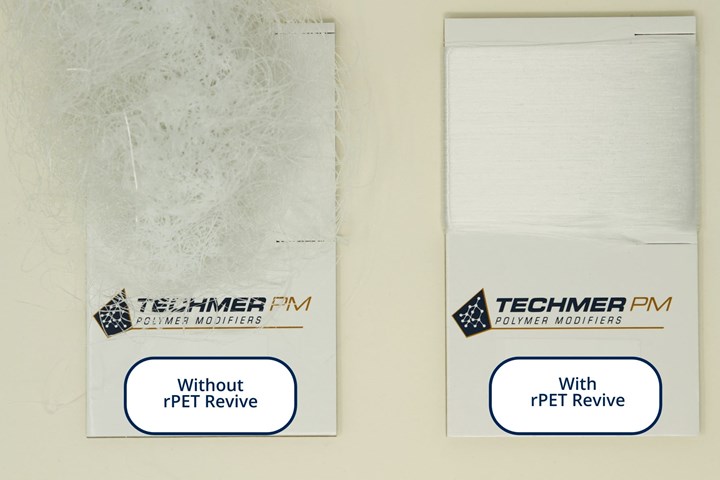Additive Concentrate for Enhancing Recycled PET Quality
Techmer PM’s HiTerra rPET Revive boosts intrinsic viscosity and reduces rPET yellowness.

A new additive concentrate that is said to rebuild the polymer chains of recycled PET (rPET) thereby increasing its viscosity and reducing rPET’s resulting yellowness has been developed by Techmer PM. HiTerra rPET Revive reportedly allows for a higher regrind/recycle rate and improved productivity, according to Steve Smith, Techmer PM’s market manager for rigid packaging.
Describing it as a new technology, Smith said, “We selected the active ingredient to be compatible with PET resins used in fiber and molding applications. Converters can use it in the production of thermoformed sheets, and the product is showing good potential for use in bottles, as well.” He also noted that rPET Revive can reduce the yellowness of the rPET to virgin鈥恖evel or, in some cases, even less yellow than virgin PET, adding the additive contains no pigments or dyes and is suitable for food鈥恈ontact applications. While Smith acknowledges that the processing of resin with chain鈥恊xtending additives can require care, he said that they are seeing good results in at both lab-scale and commercial-scale trials, and that market interest is extremely high.
The company developed the additive to both address the technical challenges of processing recycled resins and the short supply and additional cost of high-quality recycled PET.
Related Content
-
Polymer Science for Those Who Work With Plastics: Molecular Weight — What It Is and Why It Matters
Molecular weight might seem like an abstract concept, but it plays a crucial role in determining the behavior of plastics during processing and in their final applications.
-
Part 3: The World of Molding Thermosets
Thermosets were the prevalent material in the early history of plastics, but were soon overtaken by thermoplastics in injection molding applications.
-
How to Optimize Injection Molding of PHA and PHA/PLA Blends
Here are processing guidelines aimed at both getting the PHA resin into the process without degrading it, and reducing residence time at melt temperatures.




